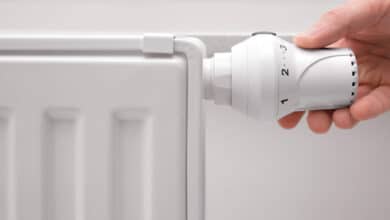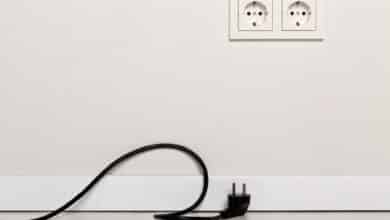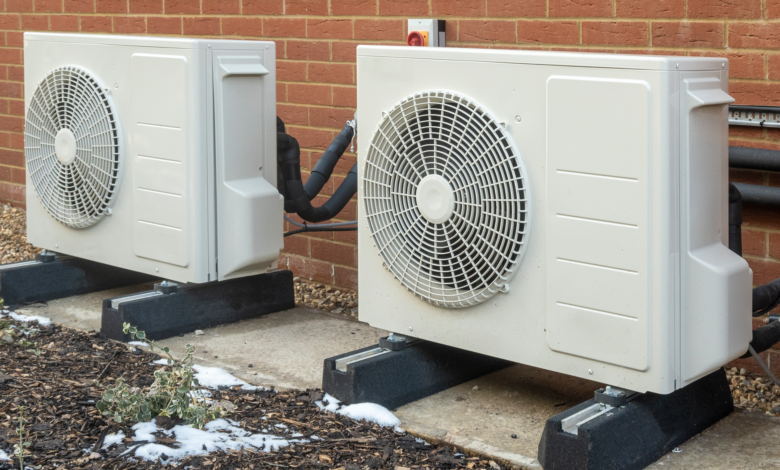
While the heating season is already in full swing, you’ve probably already racked your brains several times about how you can best get your heating costs under control this winter. Gas and heating oil prices are on the rise, and pellet prices are skyrocketing. Especially in insufficiently insulated buildings, a change of heating type can be well worthwhile. If you’re heating with old, comparatively inefficient systems, for example, the savings potential can be even greater. Switching from gas heating to a heat pump or a heat pump for backup heating is often not a big deal in newer buildings. Here you can find out what you should pay attention to when retrofitting a heat pump and what structural requirements must be met in order to make the switch relatively inexpensively.
Heat pump: building requirements
Before you decide on a heat pump, you should clarify a few things in advance that affect your house.
- The purchase of a heat pump is usually only worthwhile if your heating load is less than 15 to 20 kW. If you need more, it may first make more sense to renovate the building for energy efficiency, so that its heating load decreases.
- If you have a high demand for hot water, the installation of a heat pump is also not necessarily recommended. For a 4-5-person household or a wellness area in the building, a heat pump alone is usually not enough.
- Heat pumps are mainly suitable as underfloor or maximum wall heating with low flow temperatures below 50 °C. With radiators, this is often not enough to heat the room. In this case, it may be necessary to switch to other radiators or subsequently install underfloor heating.
Have you clarified these three points, nothing stands in the way of a heat pump installation in your own home – apart from the availability of products to possibly necessary permits. But cheer up, next winter you could already be heating by heat pump.
Heating types: Not all heat pumps are created equal
To help you decide on a particular type of heating system, you should also familiarize yourself with the specific key figures and construction methods of the three common heat pumps. Each variant brings with it very specific advantages and disadvantages, which ultimately also make themselves felt in the preparation, acquisition and installation costs.
Air-to-water heat pump
By far the simplest variant of a heat pump is the air-water variant. The ambient air is simply used as the heat source, from which heat is extracted and fed into the heating system. No costly drilling or other preparations are necessary, so you can start using this system quickly without having to make major changes to the existing building. However, an air-to-water heat pump does not come close to the other systems in terms of efficiency. On the other hand, it is also the comparatively least expensive system. However, older generations of air-to-water heat pumps are said to generate a lot of noise, so you should carefully consider the installation site in such a case.
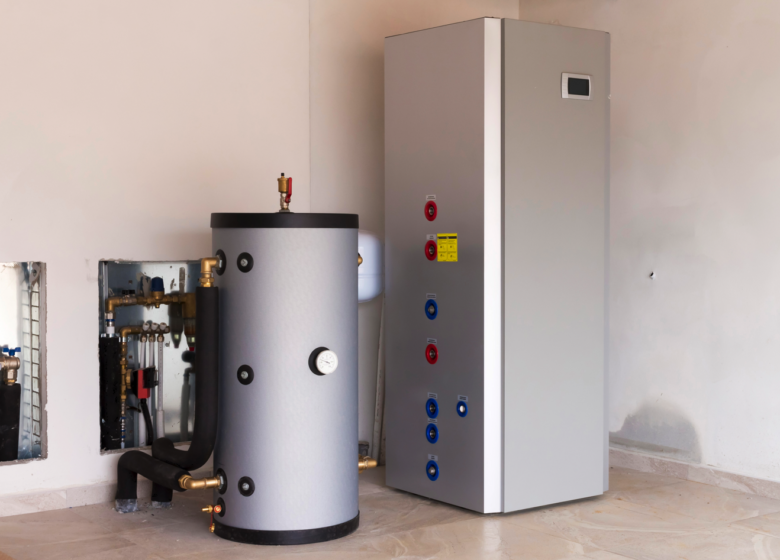
Water-to-water heat pump
The somewhat more complicated variant of a heat pump is the one in which the available groundwater is used as a heat source. This requires two boreholes through which the water is extracted and released. However, this scenario requires not only an official permit, but also a sufficiently large groundwater reservoir in the immediate vicinity of the building. It is therefore possible that this option is not profitable in your residential area, or that you are waiting in vain for the permit because the city administration is opposed to it.
But if you are the future owner of a water-water heat pump, you can consider yourself lucky. These systems offer high to very high efficiency, since the groundwater usually has a relatively constant temperature throughout the year. Consequently, the running costs of a heat pump as a heating system are lower than other types of heating systems.
Ground heat pump (brine-to-water heat pump)
From a depth of about one and a half meters, the average temperature of the earth is above freezing throughout the year. For this reason, the heat recovery of a heat pump can also be done via the earth. There are several options for laying the pipes. The most efficient option is a so-called deep drilling, where a hole up to 100 meters deep is drilled into the ground and a probe is placed at the bottom of the hole. However, this expensive solution requires a permit from the water and mining authorities, so you may have to reckon with somewhat higher initial outlay here.

Another popular way to install this type of pump is to use a surface collector. But in doing so, you need a relatively large plot of land. Pipes are laid at a depth of about 1.5 meters and a large area is covered with them. Be prepared for extensive excavation work here, which also incurs costs, but less than a borehole. A permit is usually not required for this. You have neither the desire for a deep drilling nor enough space for a surface collector? With so-called geothermal baskets, which are installed at a depth of up to four meters, you can counteract this and still cover as much ground space as possible in a small area. But once a geothermal heat pump is installed, you’ll benefit from the most efficient option and save cash as a result.
Air-to-air heat pump (for existing ventilation systems)
For larger buildings with an exhaust system installed, using an air-to-air heat pump can noticeably reduce the building’s heating costs. This type of heat pump uses the heat contained in the exhaust air stream to return it to the heating circuit. The cooled exhaust air is then directed outside. Conversely, the system draws in fresh air through an air filter, purifies it, and preheats the purified air. The air can be further heated in an optional geothermal heat exchanger.
Another positive feature of the air-to-air heat pump is that the system can also provide a comfortable living temperature in the summer. However, the air-to-air heat pump is mainly suitable for properly insulated buildings such as passive or low-energy houses.
Solar assisted heat pump
While you probably associate conventional photovoltaic panels with electricity generation, you can also use the sun’s thermal energy for heating purposes. So far nothing new. But with special solar panels, it is possible to combine them with a heat pump. In this case, the preheated water is either fed directly into the heating circuit or heated up to the desired flow temperature via the heat pump. In the end, you save valuable energy, while the panels are usually cheaper than conventional solar modules. Only the installation on the roof and the laying of water pipes can still be a small hurdle.

With solar-assisted heat pumps, however, you can not only heat your own four walls in winter, but also heat domestic hot water very cost-effectively. In the summer a little better than in winter months, but still the generated heat in direct sunlight is already enough to reduce the necessary energy for further heating to a minimum.
Think about subsidies and take advantage of them if necessary
Admittedly, heat pumps are not the most cost-effective type of heating, because the installation is often associated with great expense. However, it is usually the case with this type of heating that the total costs are amortized after just a few years and the operating costs are usually lower than with gas and oil anyway. Heat pumps are eligible for subsidies, however, so you can recoup a large amount depending on the state and type. It’s important to find out and submit applications in advance, though – and not just when you’ve already signed the bid and construction is in full swing.
The Federal Grant for Efficient Buildings (BEG) allows a maximum grant of 24,000 euros for up to 40 percent of eligible costs. The base is 25 percent, so you can usually count on this subsidy when installing a heat pump. In addition, you will receive a further 5 percent if you choose an “efficient” heat pump, i.e. one with heat sources from water, soil or even waste water. If you’re lucky, you may even qualify for the heating replacement bonus if you currently use oil, coal or night storage heating. This bonus also applies to gas heating systems that have been in operation for at least 20 years. You can fill out and submit the applications directly to the Federal Office of Economics and Export Control.
Installing a heat pump yourself
Just the installation of a heat pump or the change to the heating circuit of your building can be an obstacle for laymen, however. So if you are not 100 percent sure where best to lay the heat pipes and which part of the pump you connect to the flow and return, you should rather hire a heating professional to do it. This way, you’re sure to enjoy your new acquisition for longer.
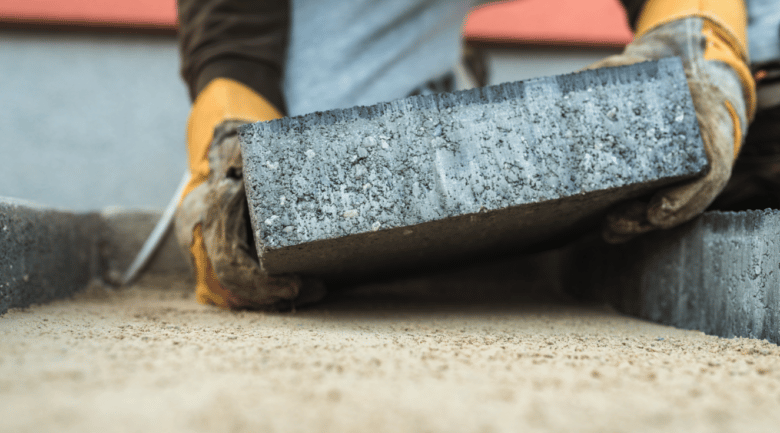
If you actually want to install your system yourself, you might want to consider a so-called monoblock. With this type of unit, everything is contained in one unit that you place outside your home on a solid platform or mount directly to the exterior wall. Roughly speaking, the installation process then looks something like the following.
- Pouring the exterior foundation
- Making a wall penetration for power and heat lines
- If necessary, install a hot water buffer tank inside
- Pulling the piping and connecting the system to the existing system
- Electrical connection to the sub-distribution (note power, FI circuit breaker even with heat pump often not only recommended, but in some countries mandatory)
- Commissioning
Small heat pump FAQ
Heat pumps are new territory for many home builders and DIYers. For this reason, it’s not unlikely that you may have a few questions burning on the tip of your tongue, which we may be able to answer here.
Is a heat pump worthwhile in an old building?
Especially in connection with renovation work, a heat pump can certainly be a sensible investment in an old building. However, you should make sure that the future heat pump works as economically as possible, i.e. that the flow temperature is as low as possible and that the most efficient medium possible is selected for temperature generation. For example, a geothermal or a water-water heat pump.
Exchange gas heating, install heat pump – does it make sense?
Depending on local conditions, switching to a heat pump can be an improvement both environmentally and economically. New heat pumps often work more efficiently than gas heating systems. Especially in combination with photovoltaics, you can keep running costs to a minimum by throwing out the old gas burner and moving an efficient heat pump into your home.
Can you integrate a heat pump with existing gas heating?
In the form of hybrid heating, you can easily add a new heat pump to your existing gas or oil heating system. Especially in new buildings, for example, even hybrid heaters are installed in a very compact form, which combine both in one device. However, due to the higher costs of purchase and (gas) operation, this hardly offers you any advantages – unless the heat pump alone cannot achieve the necessary performance.
Can a heat pump be retrofitted without underfloor heating?
For a long time, a combination of heat pump and underfloor heating was considered ideal. In the meantime, however, things have changed and the technological leap in the field of heat pumps ensures that these systems can also be operated relatively efficiently in new and old buildings without underfloor heating. Ideally, the radiators should have as large an area as possible so that as much heat as possible can be dissipated despite the lower flow temperature. In individual cases, it may be necessary to replace radiators that are too small with larger ones so that the heat dissipation can proceed optimally.
Which heat pump for the old building?
In old buildings, often lack of insulation, as well as the absence of underfloor heating, often pose a challenge to smaller, more inefficient heat pumps. In this scenario, therefore, you need a heat pump that is as powerful as possible, but above all efficient, and which can also cope with conventional radiators and compensate for heat loss through poorly insulated masonry.
